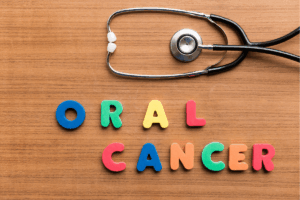
Introduction
Healthcare professionals sometimes use the terms “medical license” and “credentialing” to mean the same thing, even though they mean very different things. Providers and facilities need to know what the difference is.
When comparing licenses and credentialing, it becomes clear that one grants you the legal right to practice medicine, while the other ensures compliance with the rules set by hospitals, insurance companies, and government agencies.
To secure a job that ensures providers follow the rules and provide safe care to patients, you need to understand this difference.
Also see: Credentialing for medical providers: Everything you need to know.
What is a Medical License?
A medical license is a healthcare professional’s official authorization to practice medicine. It is granted by state medical boards as proof that a provider has completed medical school, residency, and passed licensing exams, among other requirements for a physician license.
Usually, the licensing procedure consists of:
- Confirming postgraduate training and education
- passing state or board tests such as the COMLEX or USMLE
- Fulfilling background and character requirements
The license, if granted, gives the physician the legal authority to practice medicine in that state. To ensure providers remain up to date in their field, licenses must be renewed periodically every 1-3 years through continuing medical education (CME) and re-verification of eligibility.
What is Medical Credentialing?
Medical credentialing is a process that confirms a provider’s training, education, employment history, malpractice records, and board certifications. The state does licensing, but credentialing is done by:
- Hospitals (before permitting people to enter)
- Insurance companies (before they add providers to networks)
- Healthcare organizations or group practices
Credentialing ensures that providers satisfy quality and compliance requirements, protecting both organizations and patients. It also helps facilities lower liability and preserve confidence, which is crucial for risk management.
👉 Learn more: How to get a medical credentialing service provider
Medical License vs Credentialing: Key Differences
While both are essential, they serve very different purposes. Here’s a comparison:
| Aspect | Medical License Medical | l Credentialing |
|---|---|---|
| Issuing Authority | State Medical Boards | Hospitals, insurers, healthcare organizations |
| Purpose | Grants the legal right to practice medicine | Verifies provider qualifications for employment, privileges, or payer enrollment |
| Process | Education, exams, and training verification | Review of training, work history, malpractice, and references |
| Documentation | Proof of education, exams, CME | Full application with references, insurance, and prior work details |
| Renewal | Periodic (1–3 years) | Ongoing; re-credentialing every 2–3 years |
👉 Related: What is the difference between medical credentialing and privileging?
Why Both Licensing and Credentialing Are Important
Licensing guarantees that providers fulfil the ethical and educational requirements necessary to operate legally.
In certain facilities and payment networks, credentialing guarantees that providers are certified and competent.
All of them work together to protect patient safety, guarantee adherence, and assess a provider’s suitability for employment in different healthcare environments.
Common Misconceptions
Myth 1: A medical license automatically allows you to work anywhere → False. You must also be credited by each facility or insurer.
Myth 2: Credentialing is only for doctors → Incorrect. Nurses, physician assistants, and other providers also require credentialing.
Myth 3: Credentialing is a one-time event → Wrong. Re-credentialing happens regularly to maintain compliance.
Provider compliance tips: Stay organized with documentation, track renewal dates, and avoid submitting incomplete paperwork.
Streamlining the Credentialing Process
Credentialing can take weeks or even months if done manually. To make the process more efficient:
Prepare your early start documentation prior to your intended job or hospital privileges.
Incompletes, double-checking documentation, or incorrect information are the main causes of delays.
Using professional support, partnering with healthcare credentialing services can save time and reduce stress.
👉 Recommended: How to get a medical credentialing service provider
FAQs
1. Can a healthcare provider see patients without being credentialed?
No. While a license allows you to practice, you typically cannot work in hospitals or bill insurance without credentialing.
2. Why is credentialing needed if a provider already has a medical license?
Because facilities and insurers require independent verification of qualifications for compliance and patient safety.
3. Can I work with just a medical license?
Yes, legally you can practice, but only in very limited situations. But most employment requires both licensing and credentialing.
4. Is credentialing a one-time process?
No. Providers must undergo re-credentialing every 2-3 years to maintain an active status with facilities and insurers.
Conclusion
In the healthcare field, having a medical license and credentials are non-negotiable. Credentialing verifies competence and compliance in numerous organisations, while licensing confers the legal authority to practice.
Getting credentials early with professional help is a great idea to avoid delays in getting a job and to make sure the onboarding process goes smoothly.
If you need help in getting a medical license or credentialing, you should work with medtigo company, which handles the process for you.
To know more, contact us at support@medtigo.com















